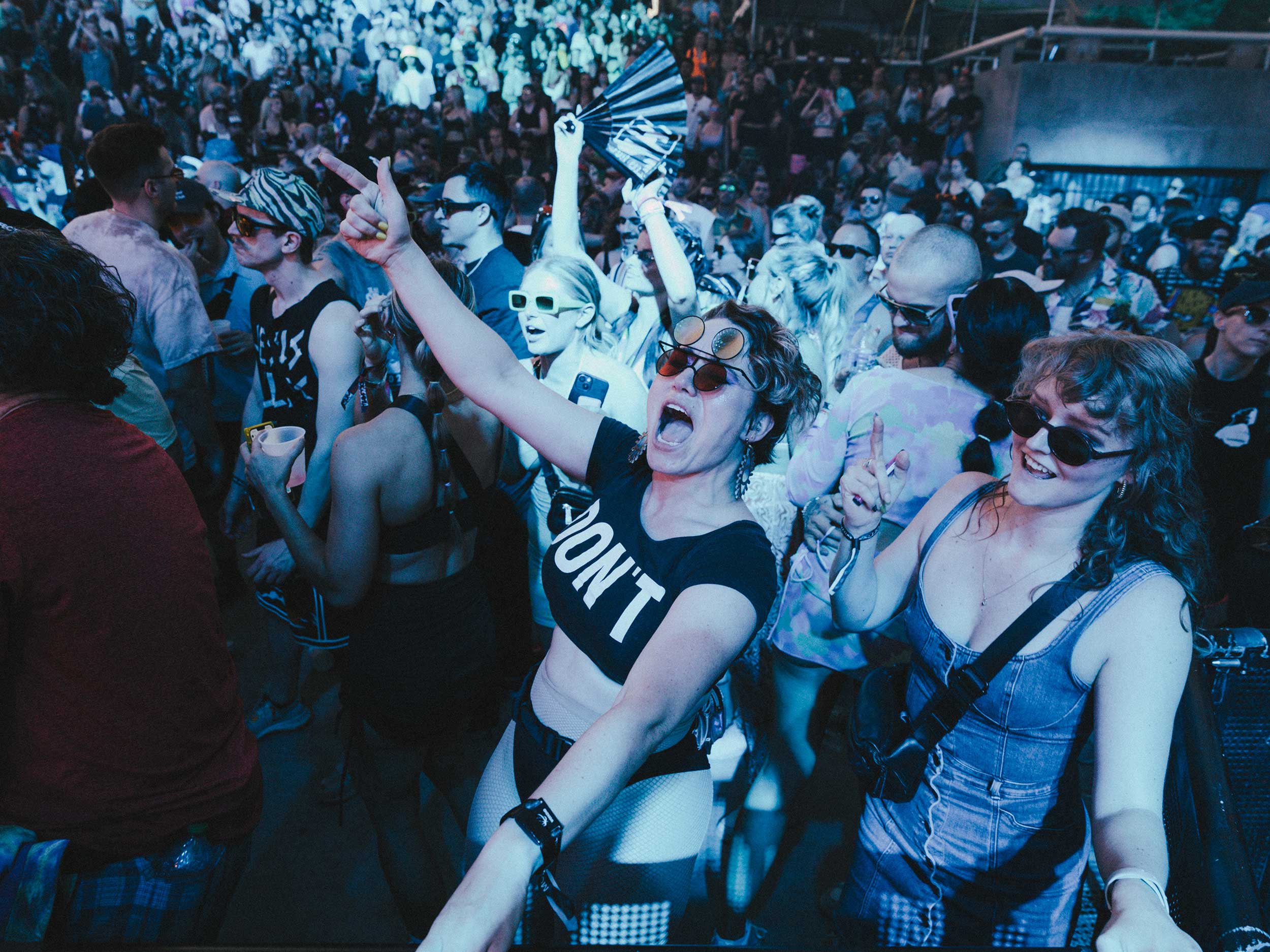The return of the legendary event was celebrated with eccentric looks, an ecosystem of afterparties, and a communal appreciation for the genre’s birthplace
Over the course of three days, thousands of technoheads descended on Detroit’s Hart Plaza to celebrate the past, present and future of electronic music. While the crowd came from all corners of the world, the message was undeniably local—techno is Detroit, and Detroit is techno.
The fashion of the festival reflected this same energy. Many revelers wore shirts and hats reminding the world that techno emerged from the Motor City, the bold creation of Black artists imagining a new kind of sound. The Belleville Three—Juan Atkins, Derrick May, and Kevin Saunderson—created the genre by interpreting electronic sound coming out of Europe through the lens of American music in the ’80s, blending the attitude of groups like Kraftwerk with American disco and house. Also present was the representation of the futurist, queer spirit of techno that embraces the counterculture and politics of electronic music at large, with traditionally masculine and feminine elements intertwined to express the fullness of their wearer’s identities.
Still, there was no shortage of the loud and eccentric styles of an event with such a broad appeal. From fluorescent body suits to a 30-person crew wearing completely cow print, the fashions of the festival served as a type of performance off the stage—often featuring styles that are typically reserved for the dim lights of a nightclub, and bringing them into the light of day. Equally unique to the world of Movement is the ecosystem of afterparties that stretch until the next morning. You can spot the iconic looks again and again as the night continues on, until everyone is spilling outside of Tangent Gallery or Marble Bar at 5am to cool off from an incredible set, clothes stripped off to accommodate 12 hours of dancing and joy. The party, like Detroit, keeps on going.






















































